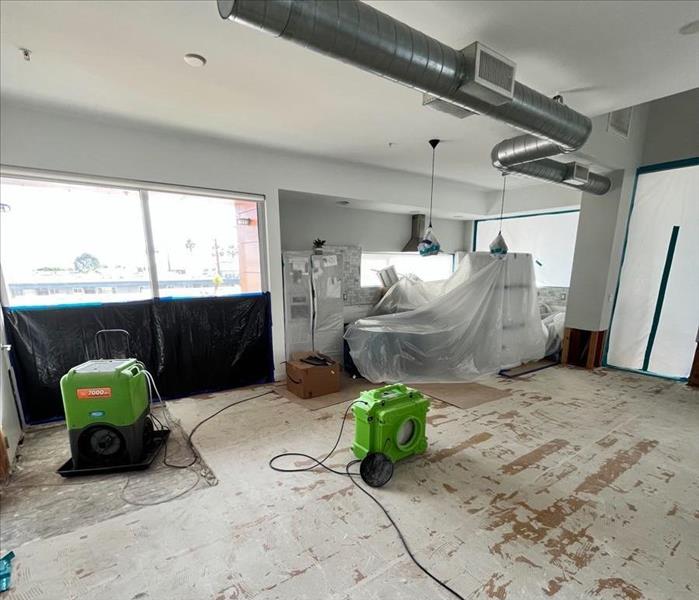Drying Techniques Demystified: Understanding Air Movers, Dehumidifiers, and More
10/24/2023 (Permalink)
 Proactive and thorough drying not only prevents further damage but also minimizes the risk of mold growth and other secondary issues.
Proactive and thorough drying not only prevents further damage but also minimizes the risk of mold growth and other secondary issues.
When faced with water damage in your home, one of the most critical steps in the restoration process is proper drying. Effective drying techniques not only remove visible water but also address excess moisture in the air and structural materials. In this blog post, we will explore various drying techniques, including air movers, dehumidifiers, and more, to help you understand their importance in restoring your home after water damage.
Air Movers
Air movers, also known as blowers or air circulators, are essential tools for accelerating the drying process. These powerful fans create a high-velocity airflow that promotes evaporation by whisking away moisture-laden air and replacing it with drier air. By positioning air movers strategically throughout the affected areas, you can speed up drying time and prevent further damage caused by prolonged moisture exposure.
Dehumidifiers
Dehumidifiers are indispensable in controlling and reducing excess moisture levels in the air. They work by extracting moisture from the surrounding environment and collecting it in a reservoir or draining it directly. Dehumidifiers are particularly useful in high-humidity regions or during humid weather conditions. They help create an optimal drying environment by reducing humidity levels, which aids in the evaporation of water from surfaces and materials.
Heat and Ventilation
Applying heat and utilizing proper ventilation techniques can significantly contribute to the drying process. Warm air can hold more moisture, which encourages faster evaporation. By utilizing heating systems, such as space heaters or central heating, you can raise temperatures in affected areas to expedite the drying process. Additionally, ensuring proper ventilation by opening windows, using exhaust fans, or running HVAC systems helps remove moisture-laden air and introduce drier air into the space.
Moisture Sensors and Meters
To effectively monitor the drying progress, moisture sensors and meters are invaluable tools. Moisture sensors detect the presence of moisture within materials by measuring electrical conductivity, while moisture meters provide precise moisture content readings. These devices help identify hidden moisture pockets that may not be visible to the naked eye, ensuring thorough drying and minimizing the risk of secondary issues such as mold growth.
Desiccants
Desiccants are drying agents that absorb moisture from the air and surrounding materials. Common desiccants used during the restoration process include silica gel, activated alumina, and calcium chloride. Desiccants are typically used in enclosed spaces or contained areas where reducing humidity levels is crucial. They are particularly effective in mitigating moisture-related issues in confined spaces like closets, cabinets, or crawl spaces.
Injectidry Systems
Injectidry systems provide a specialized drying technique for inaccessible or hard-to-reach areas. These systems use hoses and attachments to inject warm, dry air directly into wall cavities, under flooring, or within ceiling voids. By targeting specific areas, Injectidry systems help ensure thorough drying and mitigate potential hidden moisture pockets that may lead to long-term damage or mold growth.
In the aftermath of water damage, employing effective drying techniques is essential to restore your home to its pre-damaged condition. By utilizing air movers, dehumidifiers, heat and ventilation, moisture sensors and meters, desiccants, and Injectidry systems, you can create an optimal drying environment that removes excess moisture from the air and structural materials. Proactive and thorough drying not only prevents further damage but also minimizes the risk of mold growth and other secondary issues. If you're dealing with water damage, don't underestimate the power of proper drying techniques in restoring your home and ensuring its long-term integrity.






 24/7 Emergency Service
24/7 Emergency Service